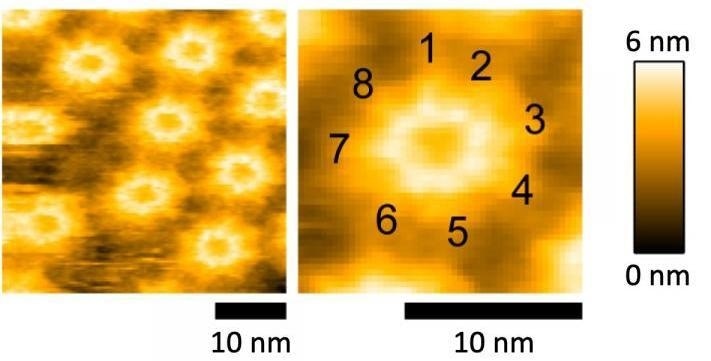The innate immune system is the main line of defense against infections caused by microorganisms. Despite this fact, the complex mechanisms of inherent immunity have not been fully understood.

Researchers from Kanazawa University developed a novel tool to study how the innate immune system fights bacterial toxins. They purified the pore-forming toxin Monalysin from a bacterial culture, and structurally and functionally characterized the purified toxin to show how it functions at the molecular level. This study could help understand the mechanisms underlying the interactions between host defense and microbial invaders. Image Credit: Kanazawa University.
In a recent study, Kanazawa University researchers have successfully synthesized and defined Monalysin, a bacterial toxin, to facilitate the analysis of how toxin-producing bacteria and the innate immune system communicate with one another.
Microbial infections are detected by the innate immune system by sensing microbial molecules (pathogen-associated molecular patterns, or PAMPs) or by sensing host signaling molecules that are discharged from damaged host cells (damage-associated molecular patterns, or DAMPs).
Pseudomonas entomophila—a bacterium—has been used as a tool to examine the mechanisms of DAMPs found in the gut. Using a pore-forming toxin known as Monalysin, P. entomophila infects insects and subsequently damages intestinal cells. Secreted as an inactive pro-toxin, Monalysin is later activated by specific proteins known as proteases.
The fruit fly, Drosophila, builds a physical barrier against proteases to protect itself from the activation of the pro-toxin, but it can still experience damage when exposed to the toxin.
Activated Monalysin forms pores in the plasma membrane of host cells, resulting in cell death, so it is important for the host to prevent its activation. We wanted to purify and functionally characterize Monalysin from P. entomophila to develop a tool that could help us understand how the host and bacteria that produce pore-forming toxins interact.”
Takayuki Kuraishi, Study Corresponding Author, Kanazawa University
The scientists achieved their objective by culturing P. entomophila and purifying pro-Monalysin from their lysates. By making the Drosophila cells to react with the purified toxin, the scientists verified its toxic effect when cell viability decreased considerably as more pro-Monalysin was introduced to the cells.
The scientists then added activated Monalysin onto a chip surrounded by a lipid bilayer, analogous to the cells’ plasma membrane. This was done to verify that pores are formed by purified Monalysin. The researchers measured the electrical current resulting from ion passage through the formed pores and demonstrated that Monalysin forms pores that have a diameter of about 0.7–1 nm.
To examine the structural composition of Monalysin, the scientists used atomic force microscopy (AFM), which offers high-resolution images by contacting the surface with a responsive mechanical probe. Through AFM, the team demonstrated that eight Monalysin molecules came collectively to create pores in the plasma membrane.
The researchers then combined AFM with high-speed imaging and showed that activated Monalysin preferentially embedded into the border of the plasma membrane. This indicates that highly curved parts of the membranes are the locations of their action.
These are striking results that show how Monalysin functions at the molecular level. Our findings could help understand how the innate immune system fights off bacteria that produce pore-forming toxins.”
Takayuki Kuraishi, Study Corresponding Author, Kanazawa University
Source:
Journal reference:
Nonaka, S., et al. (2020) Molecular and Functional Analysis of Pore-Forming Toxin Monalysin from Entomopathogenic Bacterium Pseudomonas entomophila. Frontiers in Immunology. doi.org/10.3389/fimmu.2020.00520.